During the beginning of August this year I was fortunate enough to be able to spend eleven days based at the Steve Irwin Wildlife Reserve in Cape York as a part of my research into the behaviour and movement of estuarine crocodiles. While my main job up there was to assist in servicing and downloading the data from the acoustic receiver array throughout the Wenlock River, I of course got in as much herping as I could while up on Cape York.
Perhaps one of the best aspects of researching crocodile movement is the amazing areas that you can work in. My main study site is the Wenlock River approximately 50 km’s north of Weipa. Unlike the majority of river systems in Australia, the Wenlock river is untouched by any major developments along its length. It was amazing watching how the river and flora shift as you went up and down the river.
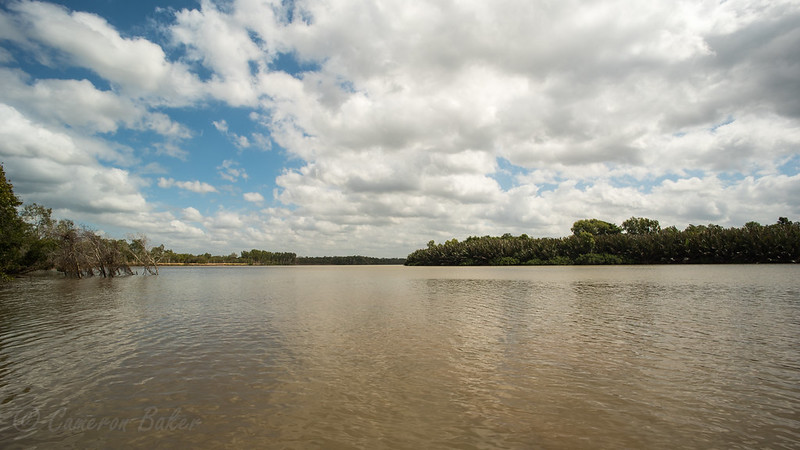 Lower Wenlock River by Cameron Baker, on Flickr
Lower Wenlock River by Cameron Baker, on Flickr
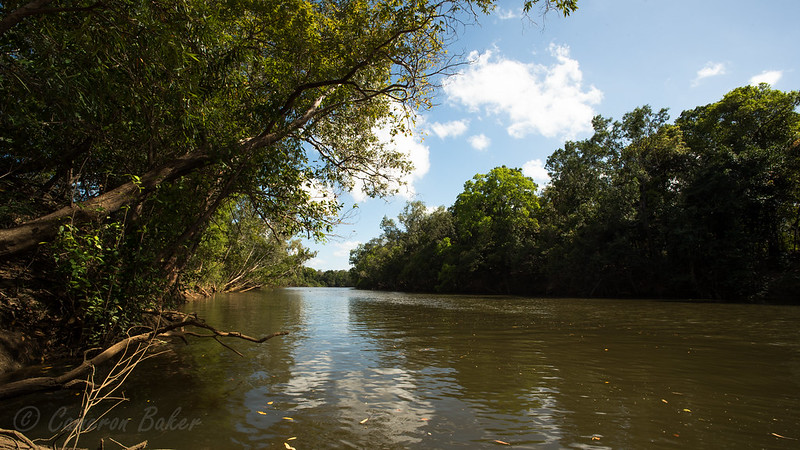 The Wenlock River by Cameron Baker, on Flickr
The Wenlock River by Cameron Baker, on Flickr
 Rifflebird bend by Cameron Baker, on Flickr
Rifflebird bend by Cameron Baker, on Flickr
 Sawfish bend by Cameron Baker, on Flickr
Sawfish bend by Cameron Baker, on Flickr
Frogs were easily the most common herp I encountered while at the reserve and perhaps the most common frog I encountered were wood frogs (Hylarana daemeli). This particular individual was found during the middle of the day while we were retrieving on of the receivers from the river. No matter how close the boat or my camera lens got it refused to move. Of course, this isn’t something that I complained about, it’s not often you can photograph a frog while sitting in a boat with a wide-angle lens!
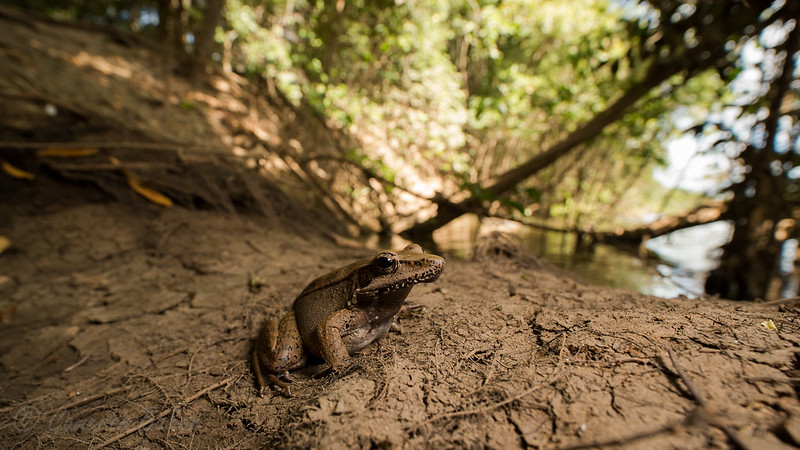 Wood frog (Hylarana daemel) by Cameron Baker, on Flickr
Wood frog (Hylarana daemel) by Cameron Baker, on Flickr
Roth’s tree frogs (Litoria rothii) were another really common species, particularly hanging out around the showers of a night.
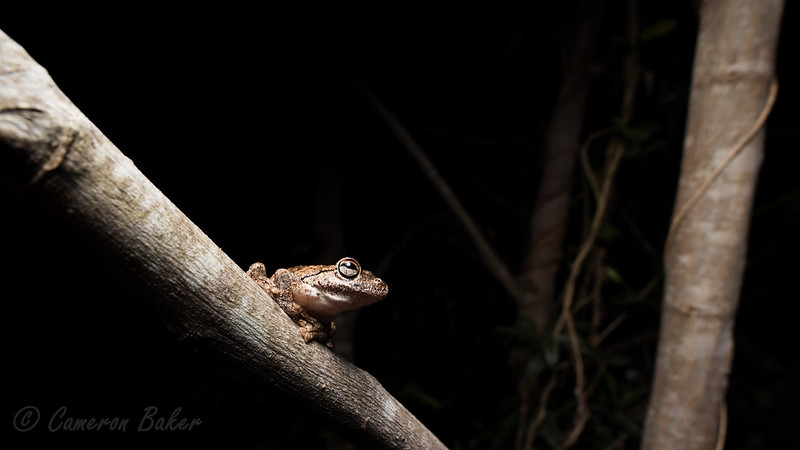 Roth's tree frog (Litoria rothii) by Cameron Baker, on Flickr
Roth's tree frog (Litoria rothii) by Cameron Baker, on Flickr
White lipped tree frogs (Litoria infrafrenata) were another relatively common species in the right areas and were also nice to see.
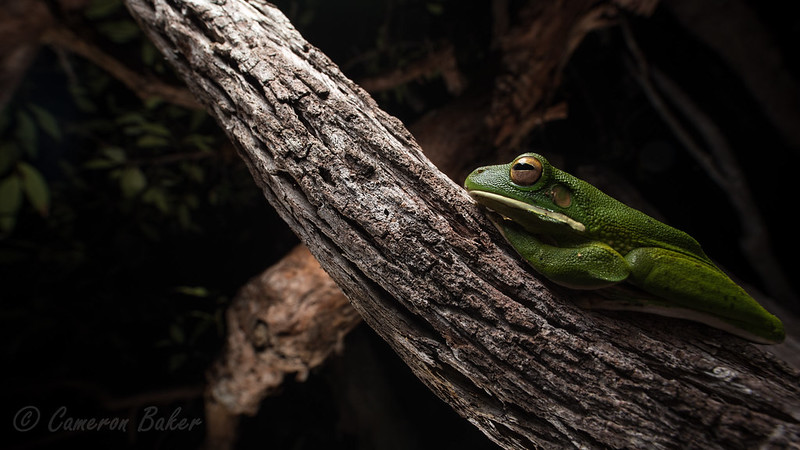 White-lipped tree frog (Litoria infrafrenata) by Cameron Baker, on Flickr
White-lipped tree frog (Litoria infrafrenata) by Cameron Baker, on Flickr
Easily the most interesting encounter I had with a frog while up there was coming across this desert tree frog (Litoria rubella) getting eaten by a grey huntsman (Holconia immanis).
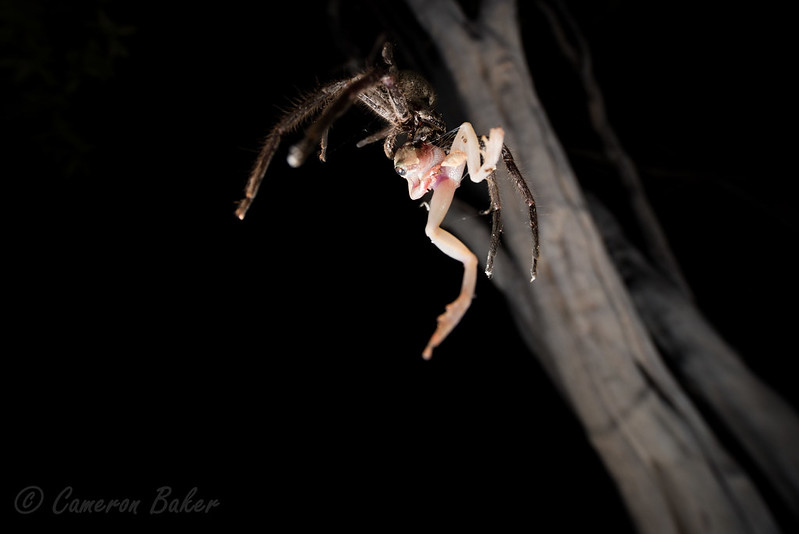 A spider eat frog world by Cameron Baker, on Flickr
A spider eat frog world by Cameron Baker, on Flickr
The Steve Irwin Wildlife Reserve itself was an amazing place to explore. One of the most beautiful areas on the reserve are the bauxite springs that are unique to the reserve and not currently known from anywhere else in the world.
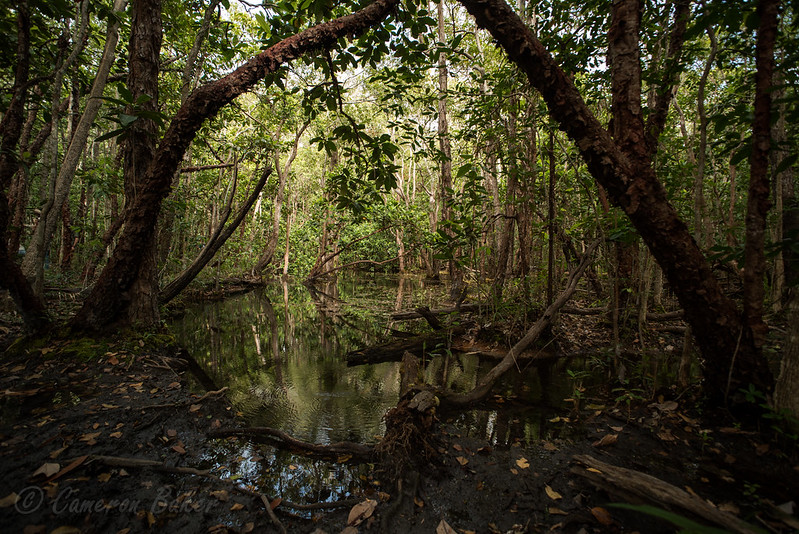 Ling creek spring by Cameron Baker, on Flickr
Ling creek spring by Cameron Baker, on Flickr
Of course, it wouldn’t be a trip up the Cape without getting at least one token termite mound photo.
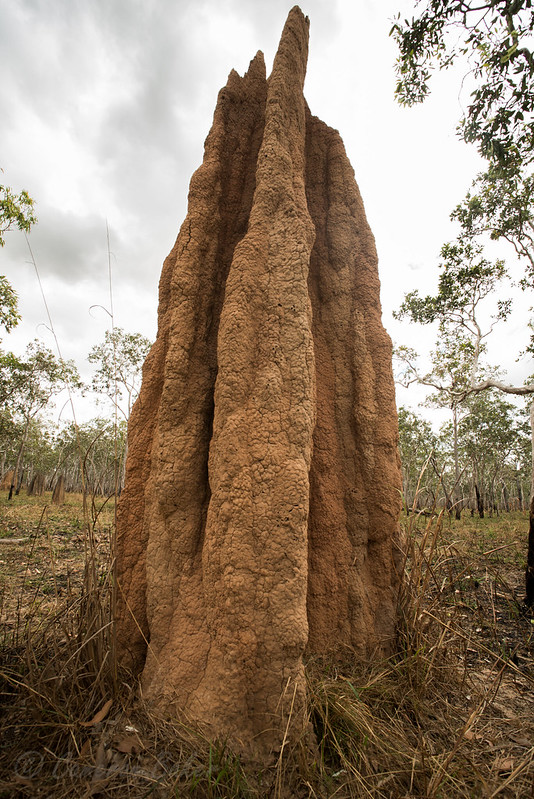 Termite mound by Cameron Baker, on Flickr
Termite mound by Cameron Baker, on Flickr
Hanging around the termite mounds and in the more open bush two-lined dragons (Diporiphora bilineata) were a common site and interesting little lizards to photograph.
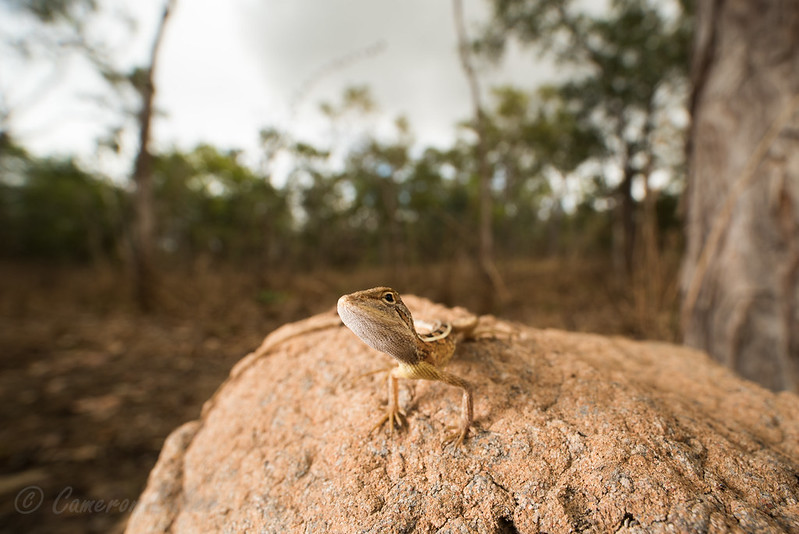 Two-lined dragon (Diporiphora bilineata) by Cameron Baker, on Flickr
Two-lined dragon (Diporiphora bilineata) by Cameron Baker, on Flickr
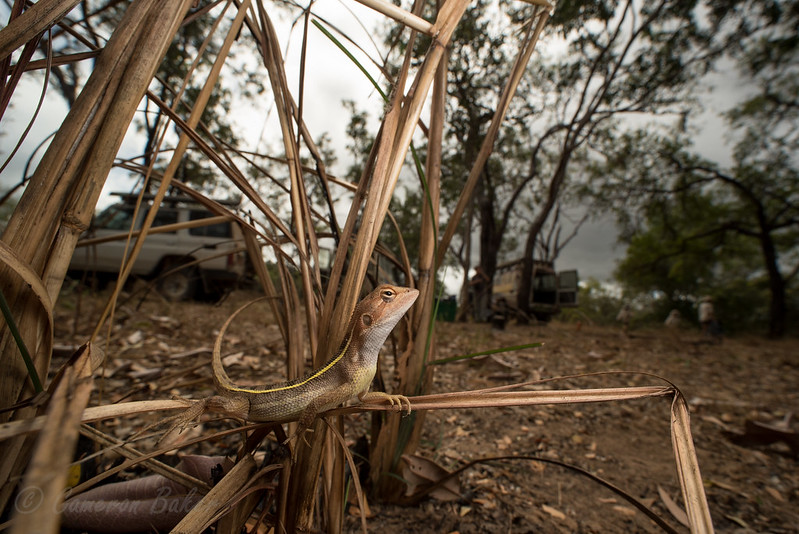 Two-lined dragon (Diporiphora bilineata) by Cameron Baker, on Flickr
Two-lined dragon (Diporiphora bilineata) by Cameron Baker, on Flickr
Now, one thing that can be rather worrying while retrieving acoustic receivers from the water’s edge is the fresh print of a rather large crocodile only 40 meters from where you have to pull the receiver up! This, and having the head of a 4 meter plus individual pop up only 10 meters from the bank while servicing a receiver certainly puts into perspective not only how dangerous the work can be, but how small we truly are.
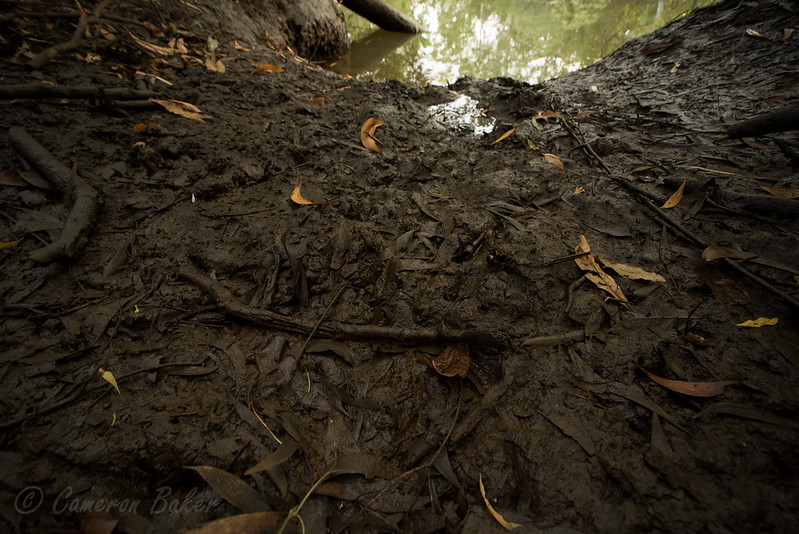 A rather large crocodile print by Cameron Baker, on Flickr
A rather large crocodile print by Cameron Baker, on Flickr
Three days before the end of my time up on the Cape the real fun began with crocodile trapping finally beginning! The research I am apart of is a joint collaboration between the University of Queensland and Australia zoo. Every year, the Australia zoo croc team assists us by conducting trapping along the Wenlock river, allowing us to attach telemetric devices to crocodiles that we would be unable to by ourselves. And trapping certainly started off with a bang this year, with three caught on just the first night! The first croc out of the traps was this decent sized 4.02-meter who decided he’d like to have a roll of our equipment while being secured.
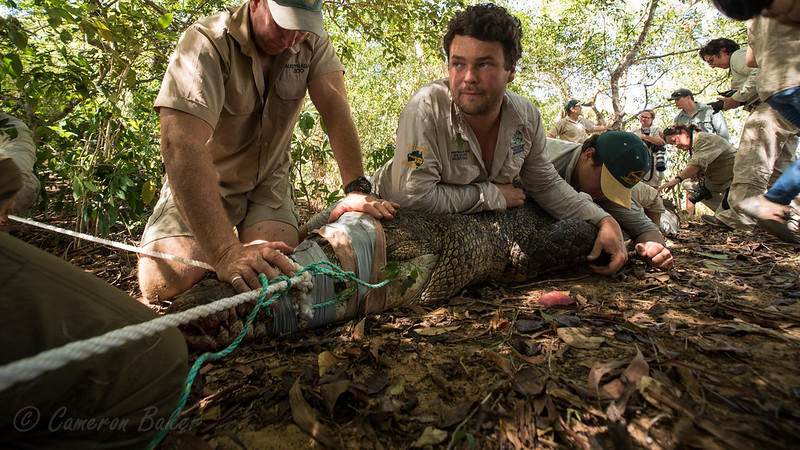 Behind a catch by Cameron Baker, on Flickr
Behind a catch by Cameron Baker, on Flickr
Next up was an even bigger 4.17-meter male caught only 800 meters upstream from where we caught the first one. This big guy though has certainly seen better days, with major lacerations down either of his sides and holes punctured into his tail.
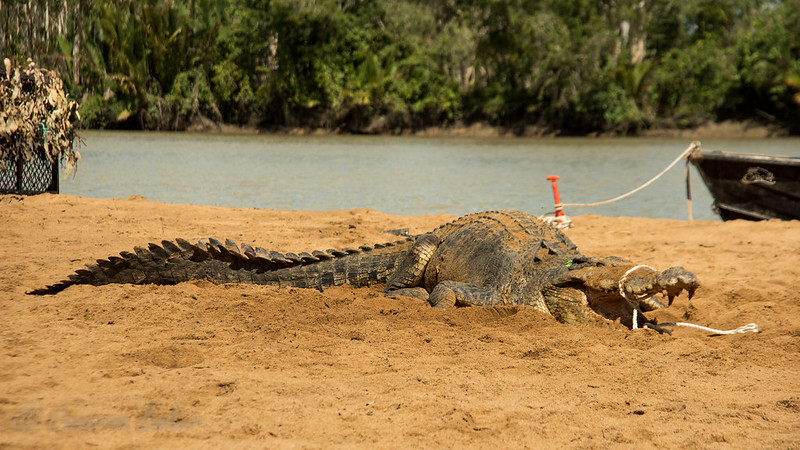 Estuarine crocodile (Crocodylus porosus) by Cameron Baker, on Flickr
Estuarine crocodile (Crocodylus porosus) by Cameron Baker, on Flickr
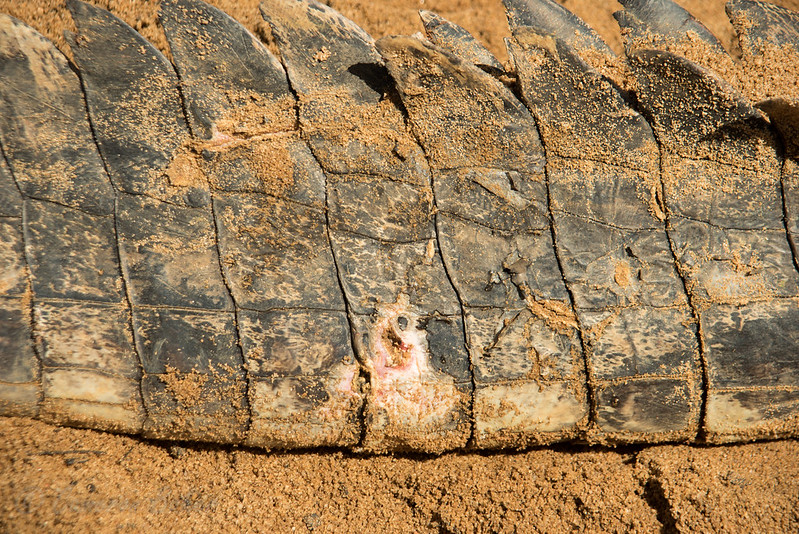 The losers mark by Cameron Baker, on Flickr
The losers mark by Cameron Baker, on Flickr
Sadly, snakes weren’t as common to come across as I was hoping, but I did manage to find a couple of species. The first I came across was this small orange napped snake (Furina ornata) cruising around one night.
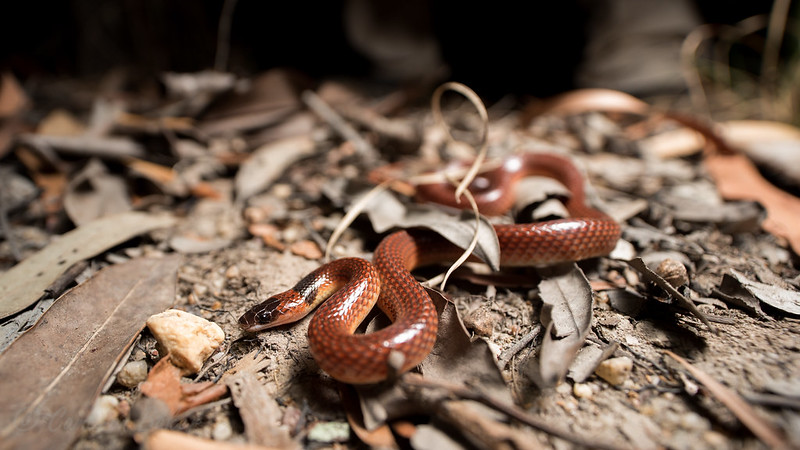 Orange napped snake (Furina ornata) by Cameron Baker, on Flickr
Orange napped snake (Furina ornata) by Cameron Baker, on Flickr
The next was a nice little brown tree snake (Boiga irregularis), which was a nice little surprise to find while walking back to my tent.
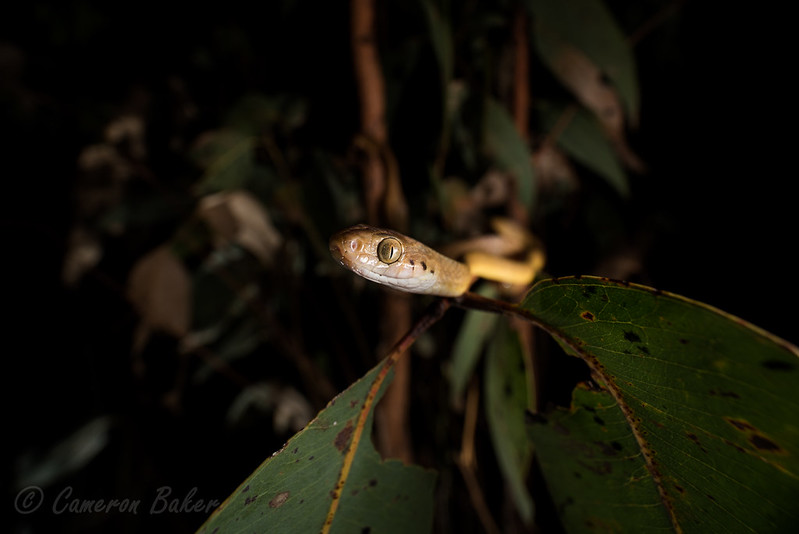 Brown tree snake (Boiga irregularis) by Cameron Baker, on Flickr
Brown tree snake (Boiga irregularis) by Cameron Baker, on Flickr
The last snake found was a nice sized scrub python (Simalia kinghorni) that was found living under the Australia zoo camera man’s tent!
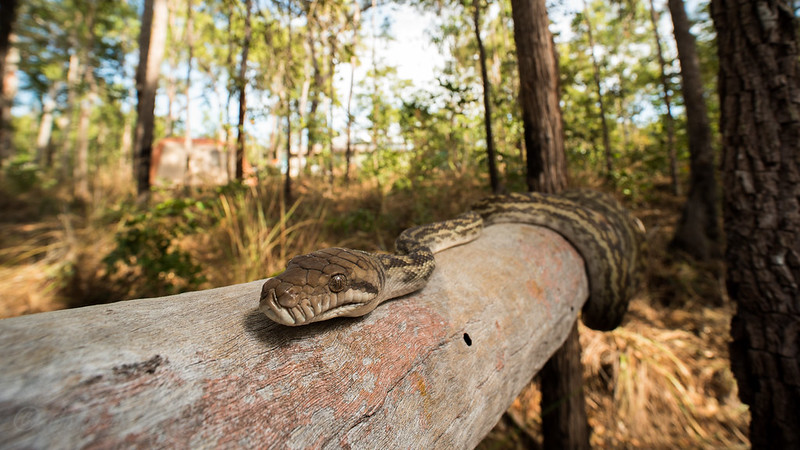 Scrub python (Simalia kinghorni) by Cameron Baker, on Flickr
Scrub python (Simalia kinghorni) by Cameron Baker, on Flickr
Then sadly my last day arrived. However, it wasn’t totally bad as I ended up finding a couple black-tailed bar-lipped skinks (Glaphyromorphus nigricaudis) who decided to begin living under my tent.
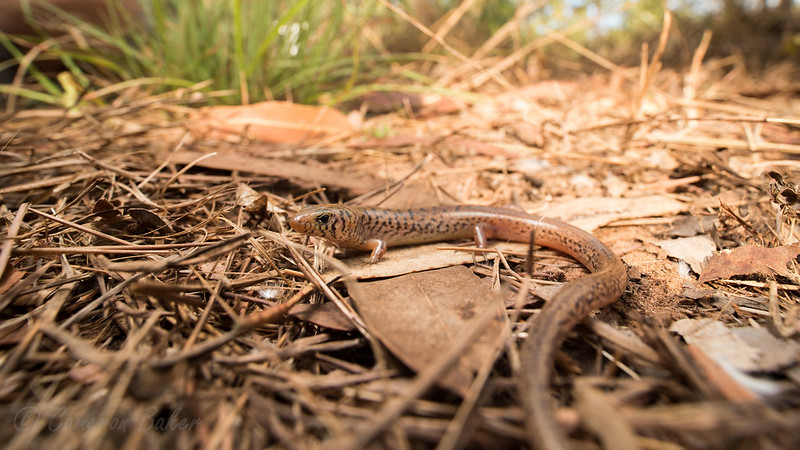 Black-tailed bar-lipped skink (Glaphyromorphus nigricaudis) by Cameron Baker, on Flickr
Black-tailed bar-lipped skink (Glaphyromorphus nigricaudis) by Cameron Baker, on Flickr
Overall it was an amazing trip into an amazing part of our country and is something I am certainly looking forward to next year (hopefully). Also, if anyone has ever been interested in seeing how much and how far estuarine crocodiles can move you can have a look by following this link: https://www.uq.edu.au/eco-lab/crocodile-tracks
Cheers, Cameron
Perhaps one of the best aspects of researching crocodile movement is the amazing areas that you can work in. My main study site is the Wenlock River approximately 50 km’s north of Weipa. Unlike the majority of river systems in Australia, the Wenlock river is untouched by any major developments along its length. It was amazing watching how the river and flora shift as you went up and down the river.
 Lower Wenlock River by Cameron Baker, on Flickr
Lower Wenlock River by Cameron Baker, on Flickr The Wenlock River by Cameron Baker, on Flickr
The Wenlock River by Cameron Baker, on Flickr Rifflebird bend by Cameron Baker, on Flickr
Rifflebird bend by Cameron Baker, on Flickr Sawfish bend by Cameron Baker, on Flickr
Sawfish bend by Cameron Baker, on FlickrFrogs were easily the most common herp I encountered while at the reserve and perhaps the most common frog I encountered were wood frogs (Hylarana daemeli). This particular individual was found during the middle of the day while we were retrieving on of the receivers from the river. No matter how close the boat or my camera lens got it refused to move. Of course, this isn’t something that I complained about, it’s not often you can photograph a frog while sitting in a boat with a wide-angle lens!
 Wood frog (Hylarana daemel) by Cameron Baker, on Flickr
Wood frog (Hylarana daemel) by Cameron Baker, on FlickrRoth’s tree frogs (Litoria rothii) were another really common species, particularly hanging out around the showers of a night.
 Roth's tree frog (Litoria rothii) by Cameron Baker, on Flickr
Roth's tree frog (Litoria rothii) by Cameron Baker, on FlickrWhite lipped tree frogs (Litoria infrafrenata) were another relatively common species in the right areas and were also nice to see.
 White-lipped tree frog (Litoria infrafrenata) by Cameron Baker, on Flickr
White-lipped tree frog (Litoria infrafrenata) by Cameron Baker, on FlickrEasily the most interesting encounter I had with a frog while up there was coming across this desert tree frog (Litoria rubella) getting eaten by a grey huntsman (Holconia immanis).
 A spider eat frog world by Cameron Baker, on Flickr
A spider eat frog world by Cameron Baker, on FlickrThe Steve Irwin Wildlife Reserve itself was an amazing place to explore. One of the most beautiful areas on the reserve are the bauxite springs that are unique to the reserve and not currently known from anywhere else in the world.
 Ling creek spring by Cameron Baker, on Flickr
Ling creek spring by Cameron Baker, on FlickrOf course, it wouldn’t be a trip up the Cape without getting at least one token termite mound photo.
 Termite mound by Cameron Baker, on Flickr
Termite mound by Cameron Baker, on FlickrHanging around the termite mounds and in the more open bush two-lined dragons (Diporiphora bilineata) were a common site and interesting little lizards to photograph.
 Two-lined dragon (Diporiphora bilineata) by Cameron Baker, on Flickr
Two-lined dragon (Diporiphora bilineata) by Cameron Baker, on Flickr Two-lined dragon (Diporiphora bilineata) by Cameron Baker, on Flickr
Two-lined dragon (Diporiphora bilineata) by Cameron Baker, on FlickrNow, one thing that can be rather worrying while retrieving acoustic receivers from the water’s edge is the fresh print of a rather large crocodile only 40 meters from where you have to pull the receiver up! This, and having the head of a 4 meter plus individual pop up only 10 meters from the bank while servicing a receiver certainly puts into perspective not only how dangerous the work can be, but how small we truly are.
 A rather large crocodile print by Cameron Baker, on Flickr
A rather large crocodile print by Cameron Baker, on FlickrThree days before the end of my time up on the Cape the real fun began with crocodile trapping finally beginning! The research I am apart of is a joint collaboration between the University of Queensland and Australia zoo. Every year, the Australia zoo croc team assists us by conducting trapping along the Wenlock river, allowing us to attach telemetric devices to crocodiles that we would be unable to by ourselves. And trapping certainly started off with a bang this year, with three caught on just the first night! The first croc out of the traps was this decent sized 4.02-meter who decided he’d like to have a roll of our equipment while being secured.
 Behind a catch by Cameron Baker, on Flickr
Behind a catch by Cameron Baker, on FlickrNext up was an even bigger 4.17-meter male caught only 800 meters upstream from where we caught the first one. This big guy though has certainly seen better days, with major lacerations down either of his sides and holes punctured into his tail.
 Estuarine crocodile (Crocodylus porosus) by Cameron Baker, on Flickr
Estuarine crocodile (Crocodylus porosus) by Cameron Baker, on Flickr The losers mark by Cameron Baker, on Flickr
The losers mark by Cameron Baker, on FlickrSadly, snakes weren’t as common to come across as I was hoping, but I did manage to find a couple of species. The first I came across was this small orange napped snake (Furina ornata) cruising around one night.
 Orange napped snake (Furina ornata) by Cameron Baker, on Flickr
Orange napped snake (Furina ornata) by Cameron Baker, on FlickrThe next was a nice little brown tree snake (Boiga irregularis), which was a nice little surprise to find while walking back to my tent.
 Brown tree snake (Boiga irregularis) by Cameron Baker, on Flickr
Brown tree snake (Boiga irregularis) by Cameron Baker, on FlickrThe last snake found was a nice sized scrub python (Simalia kinghorni) that was found living under the Australia zoo camera man’s tent!
 Scrub python (Simalia kinghorni) by Cameron Baker, on Flickr
Scrub python (Simalia kinghorni) by Cameron Baker, on FlickrThen sadly my last day arrived. However, it wasn’t totally bad as I ended up finding a couple black-tailed bar-lipped skinks (Glaphyromorphus nigricaudis) who decided to begin living under my tent.
 Black-tailed bar-lipped skink (Glaphyromorphus nigricaudis) by Cameron Baker, on Flickr
Black-tailed bar-lipped skink (Glaphyromorphus nigricaudis) by Cameron Baker, on FlickrOverall it was an amazing trip into an amazing part of our country and is something I am certainly looking forward to next year (hopefully). Also, if anyone has ever been interested in seeing how much and how far estuarine crocodiles can move you can have a look by following this link: https://www.uq.edu.au/eco-lab/crocodile-tracks
Cheers, Cameron



